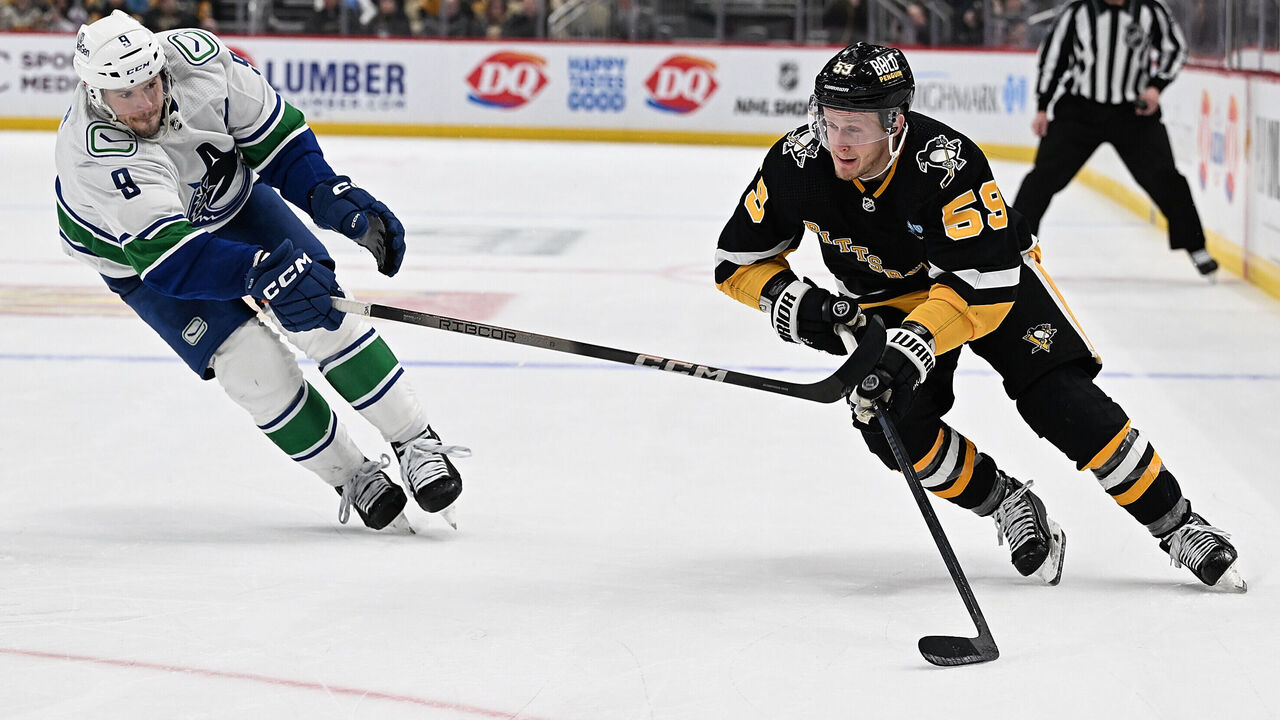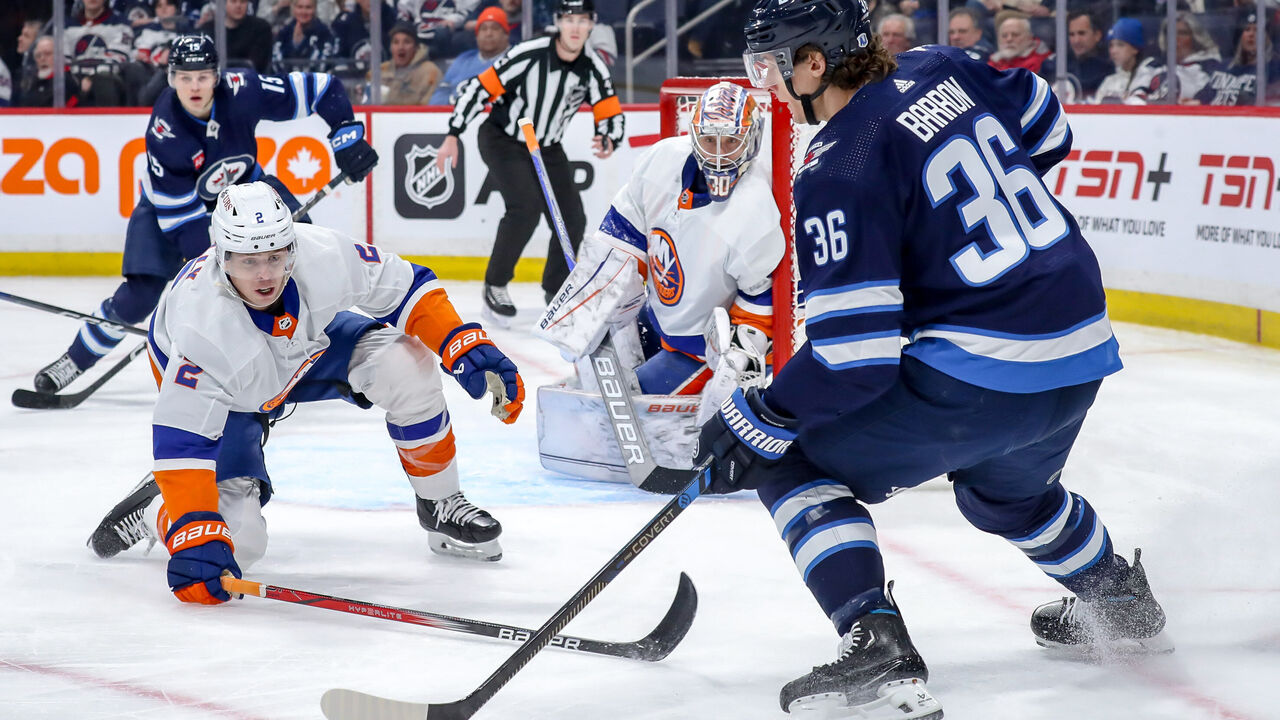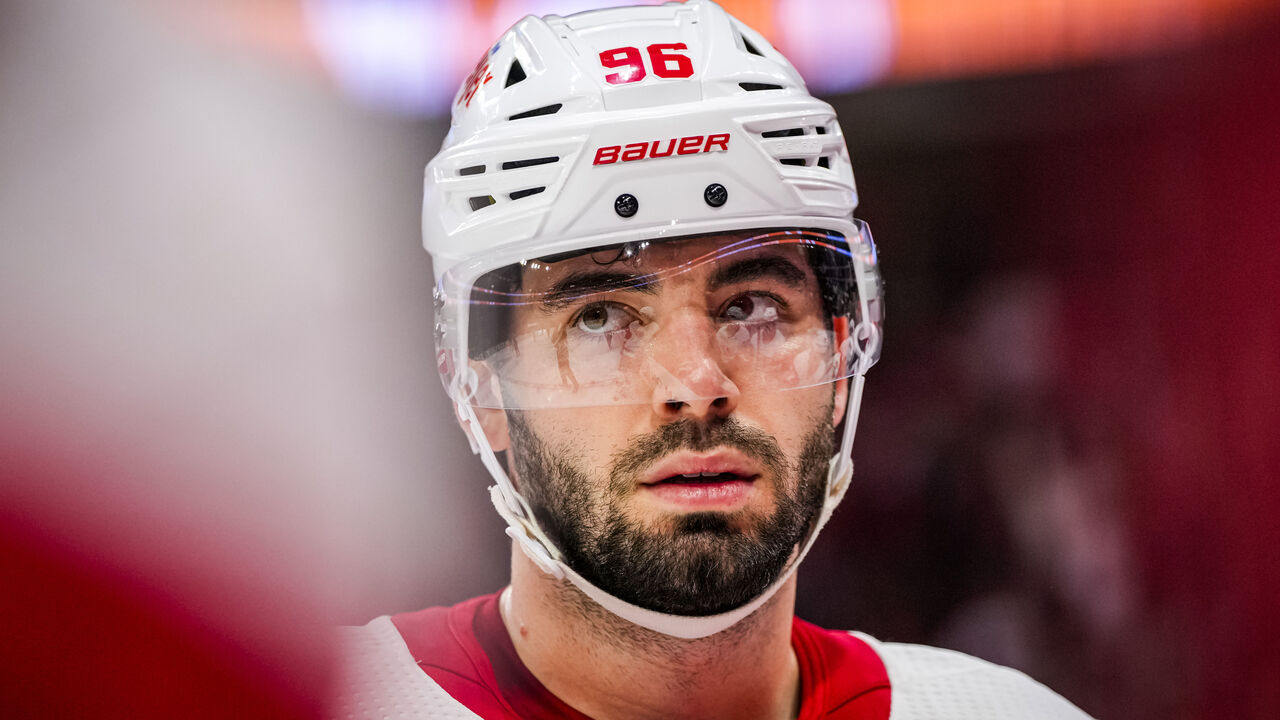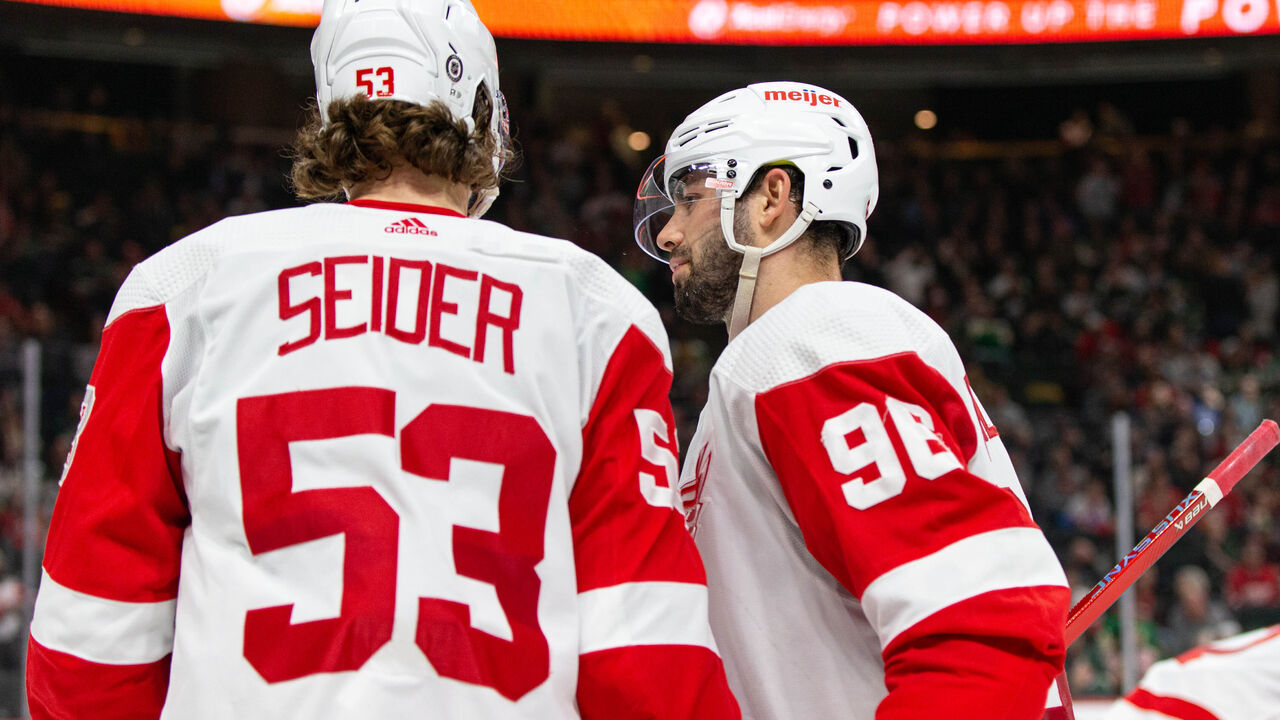Teams that need to act, eyes on Sorokin, more NHL items
The trade deadline is one giant puzzle for the NHL's 32 general managers.
Each of them must contemplate what's right for their team in the moment and for seasons to come, decide on a plan, and be prepared to pivot to Plan B, C, or Z. Those pivots tend to come on the heels of another executive's actions.
Consider what's happened since late January. Vancouver acquired center Elias Lindholm. Winnipeg responded a week later by picking up Sean Monahan, who's basically Lindholm lite. Then Dallas jumped the line on defensemen with Wednesday's crafty Chris Tanev trade. A day later, Toronto completed a trade for another right-handed blue-liner, Ilya Lyubushkin.

Buyers have been forced to recalibrate. With the deadline a week away, three Western Conference teams in particular need to act before it's too late.
Edmonton: Leon Draisaitl's contract expires after next season. Connor McDavid is up in the summer of 2026. There are no guarantees that either re-signs. The Oilers must continue to acquire as much talent as possible to make the most of this era. Their priorities are adding a scoring winger and defensive defenseman.
CapFriendly estimates that general manager Ken Holland has around $2 million in cap space. That's enough to yank Jake Guentzel out of Pittsburgh if the deal involves heavy salary retention. Plan B could be Anaheim's Adam Henrique, who's slightly cheaper. Plan C could be Washington's Max Pacioretty, who's even cheaper. Perhaps defenseman Joel Edmundson could be packaged with Pacioretty to kill two birds with one stone. As for outgoing assets, the Oilers have their first- and second-round picks in 2024 and 2026, as well as their first in 2025. However, the prospect pool isn't deep.
Colorado: The 2022 Stanley Cup champions have been riding the Nathan MacKinnon MVP wave. Realistically, though, they're too top-heavy at forward. Even with Valeri Nichushkin returning from the NHL/NHLPA player assistance program and Gabriel Landeskog potentially joining the squad for the postseason, Colorado needs outside help - preferably the versatile Henrique.
The Avalanche could also use a more experienced goalie than Justus Annunen to back up Alexandar Georgiev. Montreal's Jake Allen fits the profile. In any impact trade, the Avs will almost certainly need salary retained by the other team or a third party, or move the underperforming Ryan Johansen and his $4-million cap hit, as CapFriendly estimates around $1.2 million in space is available for GM Chris MacFarland. Like Edmonton, Colorado owns plenty of high picks in 2024 and beyond but doesn't boast many enticing prospects.

Vegas: The defending champs are, quite famously, obsessively aggressive. They've redefined what going "all-in" means for multiple years. Right now, thanks to star forwards Mark Stone and Jack Eichel landing on injured reserve, CapFriendly estimates GM Kelly McCrimmon has around $6.8 million in cap space. For the typically cap-strapped Golden Knights, that's oodles of cash.
Vegas should be in on Guentzel and the other point-producing forwards believed to be available for a steep price - guys like St. Louis' Pavel Buchnevich, Seattle's Jordan Eberle, and Pittsburgh's Reilly Smith, who's an original Golden Knight. None of those deals would be simple to pull off, so maybe McCrimmon settles for two experienced and useful forwards. Think Nic Dowd and Pacioretty in Washington, or Alex Wennberg and Pierre-Edouard Bellemare (another original) in Seattle. Vegas is motivated to beef up and owns the draft capital and prospects to pull off something meaningful.
Sorokin's super underrated year
Ilya Sorokin won't win the Vezina Trophy, and I'm not here to argue that the Islanders starter should be named goalie of the year over Connor Hellebuyck.
But Sorokin deserves some recognition for what he's accomplished this season.

The traditional statistics used to evaluate goalies don't paint a compelling picture of him. Among the 48 goalies with 20 or more starts, Sorokin is tied for 12th in wins (19), tied for 16th in save percentage (.909), and 32nd in goals-against average (3.11).
However, dig into a few layers of context, and it's obvious Sorokin's constantly swimming upstream. Islanders goalies play behind the league's second-worst defensive environment, according to Sportlogiq's expected goals model. The analytics company's model factors in the quantity and quality of scoring chances generated throughout the season.
Sorokin, who finished second in Vezina voting last season, has faced the most shots in the league this campaign, as well as the most shots from the inner-slot area. In other words, Sorokin's being peppered every night and shooters are often getting to the most dangerous pockets of the offensive zone.

All of these Grade-A scoring chances would normally break a goalie down (see: John Gibson in Anaheim). Sorokin's instead fought back in a huge way. Despite the volume, his .848 inner-slot save percentage is tops in the NHL.
Sorokin, 28, is second in the NHL with 23.8 goals saved above expected in 43 appearances, and he's third in goals saved above expected per 60 minutes (which accounts for varying workloads). Another illuminating data point: Sorokin is third in a metric called steal percentage. He's recorded a "steal" (which is awarded when a goalie's goals saved above expected value in a game is the difference in the final score) in a league-leading nine of his 19 victories.
Based on Sportlogiq's data, Sorokin has been a top-five goalie in 2023-24.
It's amazing how a little nuance can add so much to goaltending evaluation.
Walman feasting on opportunity

The longer I cover this sport, the stronger I believe that dozens of NHL-caliber players are stuck competing in lower leagues. What's typically blocking these players from securing full-time NHL work is opportunity. An opening. A GM or head coach who believes in their potential.
Jake Walman is a prime example.
He was drafted by the Blues in the third round of the 2014 draft, developed well at Providence College and in the AHL, then hit a wall. Win-now St. Louis had an abundance of older blue-liners, which meant ice time was scarce. And, in those limited minutes, Walman wasn't entirely himself. He'd play to impress.
Red Wings GM Steve Yzerman acquired Walman in a March 2022 trade that sent Nick Leddy (another veteran D-man) to St. Louis. Walman flourished almost immediately in his new home and is now a first-pairing defenseman.
"It really means a lot when you're in a place that wants you, and I'm wanted here in Detroit," Walman, who's in the first season of a three-year contract extension, told theScore this past December. "It's a totally different feeling than St. Louis. I feel like I fit in here, and I just love playing for this team."

Walman's role is plainly defined under head coach Derek Lalonde. While his "Griddy" goal celebrations command attention (rightfully so, they're fun), Walman makes his biggest contribution on rush defense. He also blocks a bunch of shots, moves the puck well, and unleashes 100-mph howitzers.
This season, Walman and partner Moritz Seider have been tasked nightly with facing the stiffest competition. The pair takes a beating in shot-attempt and expected-goal shares, but the two hold their own in actual goals: 35 goals for and 38 against in the 724 five-on-five minutes they've logged together.
"There's a time and a place for everything. You have to pick your spots. If we need a goal or we need offense, I don't have a problem playing more offensively," Walman said. "But there's also times when you've got to manage the game and know what the team needs from you. Playing against the top guys every night is not easy, and you can't lose focus of that responsibility."
Call Walman a late bloomer. Or a case study in player development. He may be both. Most of all, though, he's someone who feasted on his first legitimate NHL opportunity and hasn't slowed down. The 33-21-6 Wings benefited from that hunger last season and - crucially for their trajectory - this campaign, too.
Parting shots
Total Ek-ache: Aleksander Barkov seems to be the front-runner to win the first Selke Trophy of the post-Patrice Bergeron era. There are a ton of other worthy candidates, including Sidney Crosby, Anze Kopitar, and Sean Couturier. That means, as of now, I'm completely undecided on which five forwards will fill out my ballot in April. That said, Joel Eriksson Ek of the Wild certainly has my attention. While the Swedish center's underlying numbers aren't spectacular, he passes the eye test with flying colors. His ability to minimize the other team's top offensive threat is real: he's always in the star's face, always giving maximum effort in puck battles, always issuing minor bumps all over the ice. Always being annoying. "He's a pain in the ass to play against," is how former Wild coach Bruce Boudreau put it in 2021. Eriksson Ek, 27, isn't a flashy player or marquee name. But he's damn effective in all three zones.
They were looking for Eriksson Ek's teeth after he got a high stick to the face 😅 pic.twitter.com/Wd4SrB0GGv
— B/R Open Ice (@BR_OpenIce) November 25, 2023
Poor Jeff: The Sabres are barreling toward an NHL record 13th consecutive season of missing the playoffs. The most depressing thing about that reality: Jeff Skinner's personal playoff drought is longer. The smiley Buffalo winger is on track to miss a 14th straight postseason. Skinner is 16 regular-season games from 1,000, yet he hasn't had a taste of playoff hockey in Carolina or Buffalo. How rare is this kind of personal drought? Extremely. Every one of the 1,000-game club's 382 members has some level of playoff experience. Retired Finn Olli Jokinen is Skinner's closest comparable: 1,231 regular-season games for 10 teams but only six playoff games. Oilers forward Sam Gagner is close, too, at 11 playoff games in 1,041 games for seven clubs.
February 22nd, 2011. 13 years ago today.
— The Sabre Report (@TheSabreReport) February 22, 2024
Terry Pegula is introduced as the next owner of the Buffalo Sabres. pic.twitter.com/uplBLMcDCL
PWHL: One word sticks in my mind when I think of the new women's hockey league's debut season: enormous. Enormously successful and enormously innovative. The attendance record has been broken multiple times. The 3-2-1 scoring system just - hmm, how do I frame this? - makes so much sense. The "jailbreak" rule, where a shorthanded goal frees the penalized player from the box, is awesome. The league announced earlier this week that four teams make the playoffs, and semifinal matchups will be determined by the No. 1 seed, which will choose to face either the third- or fourth-place squad. The draft order will follow the Gold Plan (full rundown of the concept here), which is neat. Aside from teams not having distinct nicknames or logos, no major complaints on the launch. Thumbs-up to the PWHL, its teams, and its players.
Credit to the PWHL for trying the things that other leagues won’t. I think the gold plan might be more meaningful when the league adds a couple of additional franchises, but no need to wait to implement it. https://t.co/3OwDbSnXF6
— Tao of Stieb (@TaoofStieb) February 28, 2024
Takes, Thoughts, and Trends is theScore's biweekly hockey grab bag.
John Matisz is theScore's senior NHL writer. Follow John on Twitter (@MatiszJohn) or contact him via email (john.matisz@thescore.com).